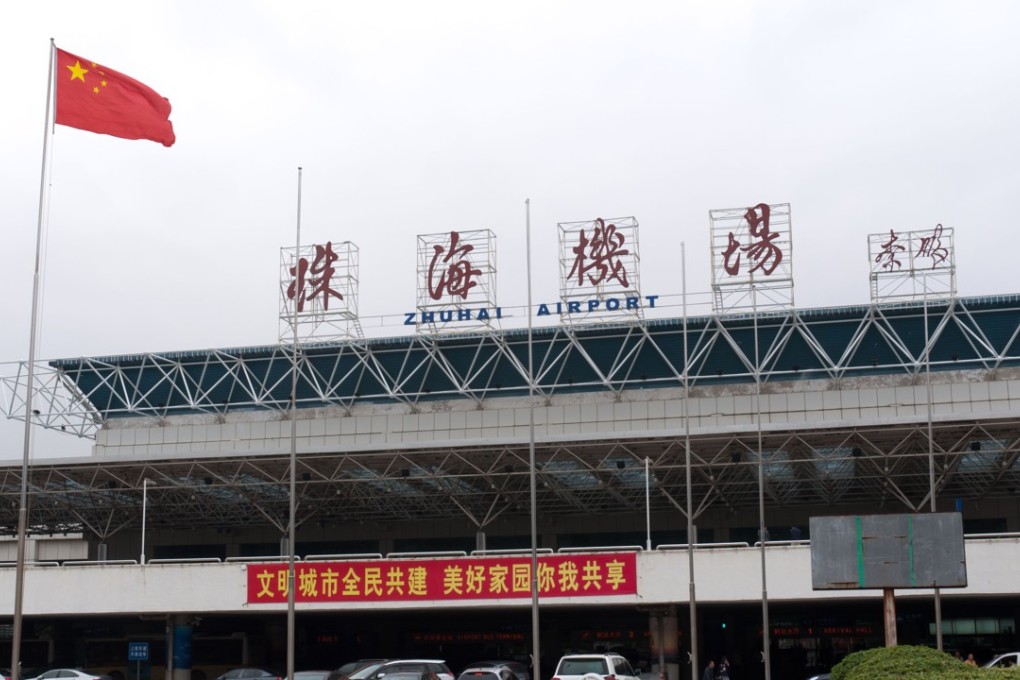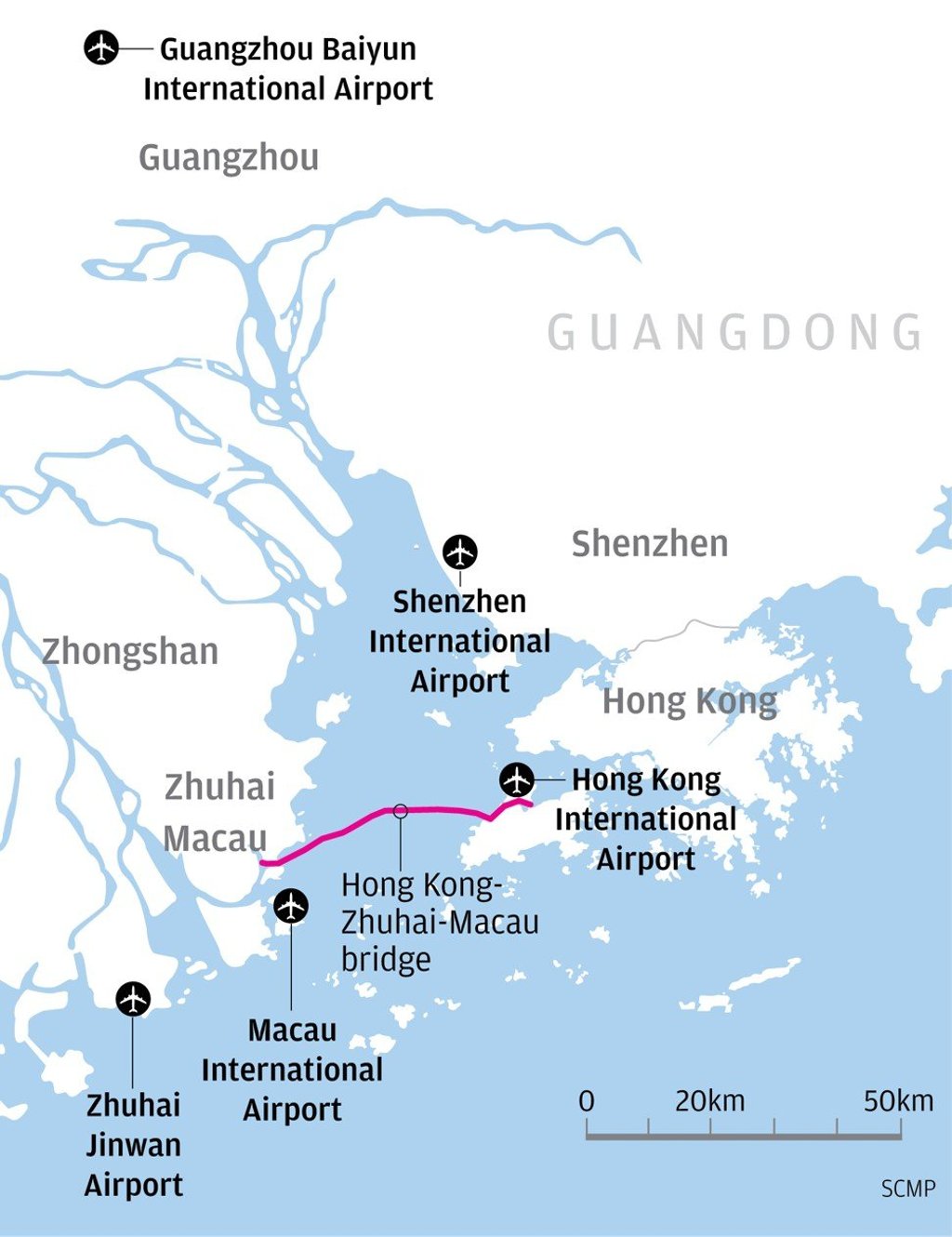Zhuhai Airport could act as Hong Kong’s ‘fourth runway’ in bid to strengthen economic ties and boost air traffic
Plan would see freight planes, business jets and some international cargo handled by Zhuhai in bid to free up space for more commercial flights in Hong Kong

Officials and experts said Hong Kong International Airport would be too busy between 2019 and 2020 to launch new flights before its third runway was ready, despite forecasts about soaring air travel demands. The boss of Zhuhai Airport said it was in the best position to complement the city.
His plan is to divert freighter aircraft, business jets and some international cargo handling to Zhuhai to free up space for more commercial passenger flights in Hong Kong.

The Greater Bay Area development strategy, aimed at integrating Hong Kong, Macau, and nine cities in Guangdong province, capitalises on the economic reinvention of the Pearl River Delta. The hope is that the Hong Kong-Zhuhai-Macau bridge, under construction now, can act as a link between the two airports.
Closer ties would also be financially beneficial to Hong Kong’s Airport Authority, which has a 55 per cent stake and a long-term management contract to run Zhuhai Airport.